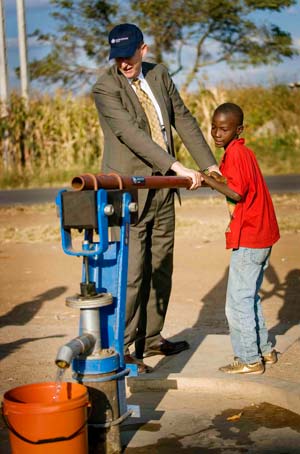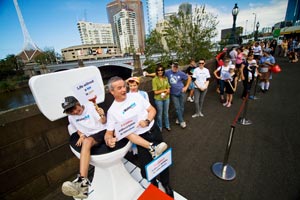World Water Day provides a timely reminder that more needs to be done to ensure the dignity and good health of all, including the poor, through effective sanitation, water measures and good hygiene practices like handwashing with soap.
Poor water and sanitation were key drivers in a cholera epidemic that gripped Zimbabwe in 2008. From August 2008 to January 2009 there had been almost 2,500 deaths from more than 47,000 cases. Since 2008, Australia has contributed more than $13.8 million towards water and sanitation programs in Zimbabwe aimed at decreasing the risk and impact of cholera outbreaks. The incidence of cholera in Zimbabwe is a fraction of what it was a year ago. By January 2010 there had been only five deaths from 149 cases in the most recent outbreak.
Parliamentary Secretary for International Development Assistance, Bob McMullan said; 'Without access to clean water and proper sanitation people cannot lead healthy, fully productive lives and communities and countries cannot develop. This is why Australia has made improving water and sanitation an important part of our overseas aid program.'
To raise awareness of this issue WaterAid, an international charity dedicated to helping poor people access safe water and sanitation, organised the World's Longest Toilet Queue on 20 March 2010. The queue involved thousands of people in 61 countries. The Australian queue was held in Federation Square in Melbourne.
The 2010 World Health Organization (WHO)/UNICEF Joint Monitoring Programme for Water Supply and Sanitation report, Progress on Sanitation and Drinking Water, was released on 16 March 2010, in time for World Water Day. The report can be found at http://www.wssinfo.org/
The report estimates that 884 million people do not use improved sources of drinking water and 39 per cent of the world's population, or 2.6 billion people, do not use improved sanitation. The majority of these people live in South Asia, followed by Eastern Asia and Sub–Saharan Africa. The WHO estimates that 88 per cent of diarrhoeal disease is attributed to unsafe water supply, inadequate sanitation and hygiene.


